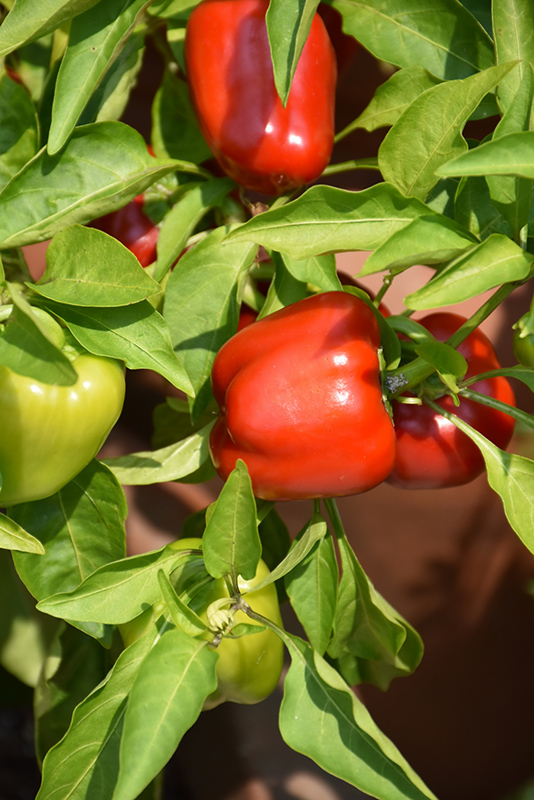Snackabelle Red Sweet Pepper
Capsicum annuum 'Snackabelle Red'
Height: 24 inches
Spacing: 18 inches
Sunlight:
![]()
Hardiness Zone: (annual)
Group/Class: Sweet Bell
Description:
A mounded-compact variety perfect for any patio container or garden; producing small bell peppers which emerge green and ripen to red; edible at either stage, these thick walled, sweet peppers are great stuffed, roasted, in salads or just by themselves
Edible Qualities
Snackabelle Red Sweet Pepper is an annual vegetable plant that is typically grown for its edible qualities. It produces green peppers (which are technically 'berries') with red flesh which can be harvested at any point. The fruit will often fade to red over time. The peppers have a sweet taste and a crisp texture.
The peppers are most often used in the following ways:
- Fresh Eating
- Eating When Cooked/Prepared
- Cooking
- Pickling
- Canning
Planting & Growing
Snackabelle Red Sweet Pepper will grow to be about 24 inches tall at maturity, with a spread of 18 inches. When planted in rows, individual plants should be spaced approximately 18 inches apart. This vegetable plant is an annual, which means that it will grow for one season in your garden and then die after producing a crop.
This plant is typically grown in a designated vegetable garden. It should only be grown in full sunlight. It does best in average to evenly moist conditions, but will not tolerate standing water. It may require supplemental watering during periods of drought or extended heat. It is not particular as to soil pH, but grows best in rich soils. It is somewhat tolerant of urban pollution. This is a selected variety of a species not originally from North America.
Snackabelle Red Sweet Pepper is a good choice for the vegetable garden, but it is also well-suited for use in outdoor pots and containers. It can be used either as 'filler' or as a 'thriller' in the 'spiller-thriller-filler' container combination, depending on the height and form of the other plants used in the container planting. It is even sizeable enough that it can be grown alone in a suitable container. Note that when growing plants in outdoor containers and baskets, they may require more frequent waterings than they would in the yard or garden.

